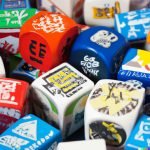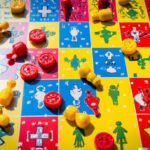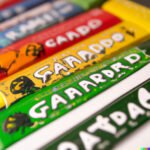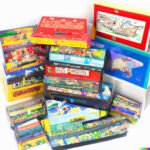Are you looking for a fun and engaging game to play with your kids? Look no further than Jenga Classic Kids Board Games. This timeless game has been a favorite among families for generations, providing hours of entertainment and excitement. Whether you’re introducing your little ones to this classic game for the first time or rediscovering the thrill of pulling out blocks with shaky hands, Jenga is sure to be a hit.
The history of Jenga is rich and fascinating, tracing its origins back to the 1970s. Since its creation, Jenga has become a beloved household name, known for its simple yet addictive gameplay. Not only is it entertaining, but playing Jenga also offers a wide range of benefits for kids, making it an ideal addition to any family game night.
In this article, we will delve into the origins of Jenga and explore the many wonderful reasons why it’s the perfect game to enjoy with kids. We’ll also provide helpful tips and tricks for mastering the game, as well as creative variations that add even more excitement to the classic gameplay. So grab your Jenga set and get ready to embark on a thrilling journey through the world of Jenga Classic Kids Board Games.
History of Jenga
The Creation of Jenga
Developed by Leslie Scott, a British entrepreneur, the game was inspired by a wooden block stacking game that her family played in Africa. After bringing the game back to England, Scott decided to mass-produce it under the name “Jenga,” which is derived from a Swahili word meaning “to build.”.
At first, Jenga did not receive much attention in the United States. However, after being exhibited at the London Toy Fair in 1983 and later at the New York Toy Fair in 1986, the game gained widespread popularity. The rest, as they say, is history.
Jenga’s Rise to Fame
Throughout the years, Jenga has become a staple in many households and social gatherings. Its simple concept and easy-to-learn rules have made it a hit among kids and adults of all ages. In addition to its commercial success, Jenga has also been recognized with multiple awards for its innovative design and entertainment value.
Today, Jenga continues to be enjoyed by people all over the world. It has even spawned various editions and spin-offs that cater to different themes and interests. From traditional wooden blocks to giant-sized versions for outdoor play, Jenga’s journey from a humble family game to an international sensation is truly remarkable.
Benefits of Playing Jenga With Kids
Playing Jenga with kids offers a wide range of benefits that go beyond simple entertainment. This classic board game is not only fun, but it also promotes important skills such as problem-solving, hand-eye coordination, and strategic thinking. By engaging in this interactive game, children can enhance their cognitive and physical abilities while having a great time with friends and family.
One of the key benefits of playing Jenga with kids is the development of fine motor skills. As they carefully remove one block at a time, children work on their hand-eye coordination and precision. This precise movement helps to improve their dexterity and control over their hand movements, which can be beneficial for various activities both in and out of school.
Furthermore, Jenga encourages critical thinking and strategic planning. Kids have to carefully assess the tower’s stability before making a move, which promotes problem-solving skills. They learn to think ahead and anticipate potential consequences of their actions, enhancing their ability to make informed decisions in other aspects of their lives.
In addition to these cognitive benefits, playing Jenga with kids promotes social interaction and bonding. As they take turns removing blocks from the tower, children learn important social skills such as patience, cooperation, and good sportsmanship. This fosters positive relationships with peers and family members while creating lasting memories through shared experiences.
Step-by-Step Guide on How to Play Jenga
Playing Jenga is simple and fun, making it a popular game for kids of all ages. The game consists of 54 rectangular blocks that are stacked in layers of three. The objective of the game is to carefully remove one block at a time from the tower and then stack it on top, creating a taller and more precarious structure. The game continues until the tower collapses.
To start, set up the Jenga tower by stacking the blocks in alternating layers of three until you have 18 levels. Once the tower is set up, players take turns carefully removing one block at a time from any level except for the topmost completed layer. Players can only use one hand to remove blocks, and they must place each block back on top of the tower after removing it.
The game continues with each player taking turns removing and stacking blocks. The player who successfully removes and stacks a block without causing the tower to collapse wins the game. It’s important to have a steady hand and a strategic mindset while playing Jenga, as even the slightest wrong move can lead to an epic tumble of blocks.
Tips and Tricks to Mastering Jenga
So you’ve mastered the basic rules of Jenga and you’re ready to take your skills to the next level. Whether you’re playing with kids or adults, these tips and tricks will help you become a Jenga master in no time:
- Focus on the Center: When removing a block, try to find one from the middle of the tower. This helps maintain stability and minimizes the risk of causing the tower to tumble.
- Tapping Technique: Before pulling out a block, gently tap it from different sides to test its looseness. This can help you identify which block is the easiest to remove without toppling the tower.
- Steady Hands: It may seem obvious, but keeping a steady hand is crucial in Jenga. Take deep breaths and focus on making precise movements when pulling out a block.
In addition to these tips, it’s also important to keep an eye on your opponents’ moves. Pay attention to which blocks they remove and how they affect the stability of the tower. This can give you valuable insight into which blocks are safe to pull out next.
Remember that practice makes perfect when it comes to Jenga. The more games you play, the better you’ll become at assessing which blocks are loose and maintaining balance in the tower. So gather your fellow players and start practicing these tips as you work toward mastering this classic game.
Jenga Variations
In conclusion, Jenga Classic Kids Board Games offer a versatile and enjoyable gaming experience for children of all ages. By exploring the history of this classic game, we can better appreciate its enduring appeal and how it has evolved over time. Whether it’s promoting essential skills like hand-eye coordination and strategic thinking, or simply providing hours of entertainment, Jenga has proven to be a beloved pastime for generations.
With its simple rules and endless possibilities, playing Jenga with kids can have numerous benefits. Not only does it foster a competitive spirit and teamwork, but it also encourages creativity as players experiment with different variations of the game. From developing fine motor skills to promoting quick thinking and problem-solving abilities, Jenga offers a fun way for children to learn and grow.
As we delve into the step-by-step guide on how to play Jenga and explore various tips and tricks for mastering the game, it becomes clear that there is much more to this classic than meets the eye. With different variations adding new layers of excitement to the gameplay, Jenga continues to captivate young minds while providing an opportunity for wholesome family fun.
Whether played traditionally or with a twist, Jenga remains a timeless favorite that brings joy to both kids and adults alike.
Frequently Asked Questions
How Do You Make Jenga More Fun for Kids?
Making Jenga more fun for kids can involve adding a creative twist to the game. For example, using colorful wooden blocks or incorporating stickers with different challenges on them.
Another fun idea is to use animal-shaped blocks or blocks with numbers and colors, which can make the game more visually engaging for kids. Additionally, you can create a “build your own block” option where kids can add their own designs to the blocks before playing.
What Is the Classic Board Game With Wooden Blocks?
The classic board game with wooden blocks is Jenga. This game consists of 54 wooden blocks that are stacked in a tower structure, and players take turns removing one block at a time from any level below the highest completed one and placing it on the topmost level.
Can 6 Year Olds Play Jenga?
Depending on their motor skills and ability to follow rules, most 6-year-olds can play Jenga. With some guidance and supervision, they should be able to participate in this game without any issues.
However, it’s important to ensure that they understand the concept of the game and are careful when removing and placing the blocks to prevent any accidents.

I love playing all kinds of games – from classics like Monopoly to modern favourites like Ticket to Ride.
I created this blog as a way to share my love of board games with others, and provide information on the latest releases and news in the industry.





